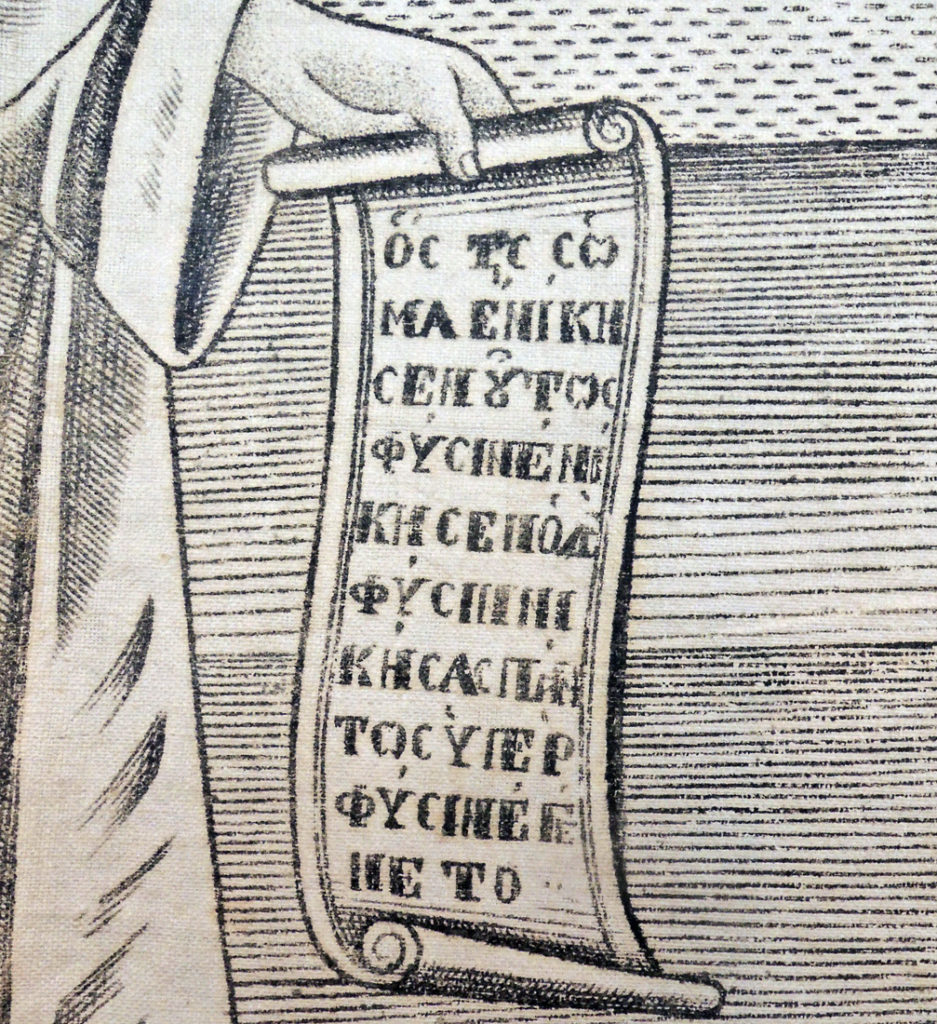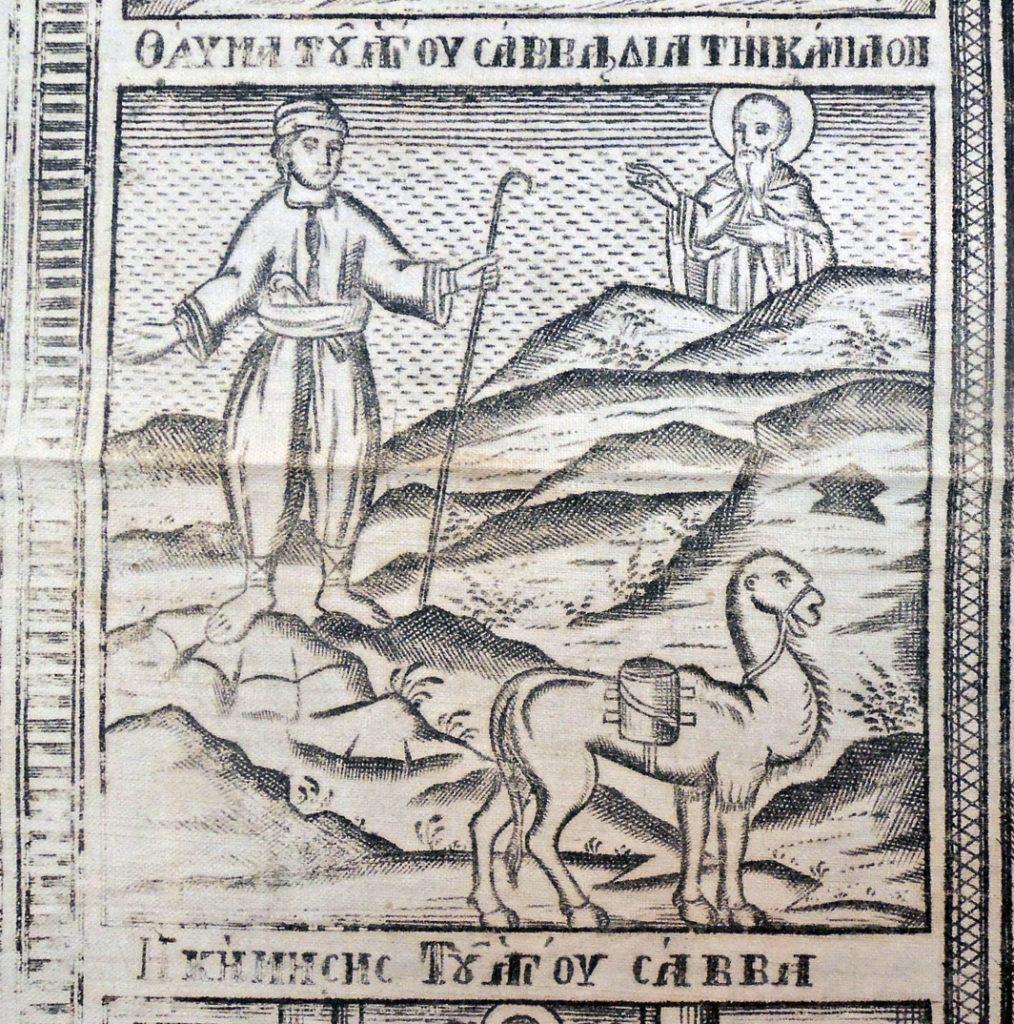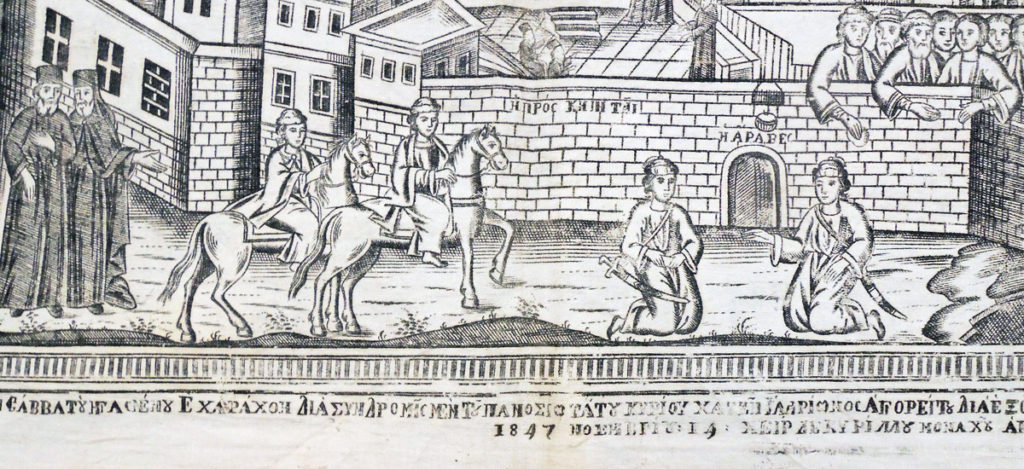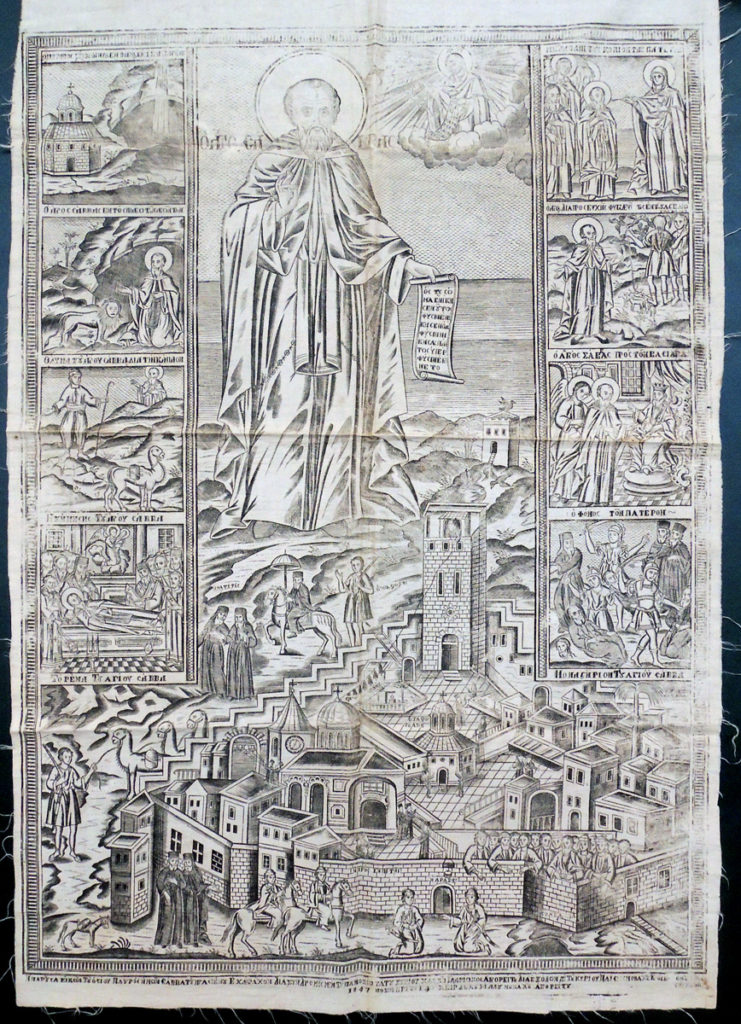 Kyrillos (Cyril), Translation from the Greek: Saint Savvas, the Sanctified [Depictions from his life with, in foreground, monastery of Saint Savvas in Jerusalem]. Engraved at Mount Athos by Kyrillos, with expenses defrayed by Paisios, 1847, November 14. Engraving printed on cloth. 51.5 x 82.5 cm. (image: ~50 x 70 cm.). Graphic Arts Collection GAX 2017- in process
Kyrillos (Cyril), Translation from the Greek: Saint Savvas, the Sanctified [Depictions from his life with, in foreground, monastery of Saint Savvas in Jerusalem]. Engraved at Mount Athos by Kyrillos, with expenses defrayed by Paisios, 1847, November 14. Engraving printed on cloth. 51.5 x 82.5 cm. (image: ~50 x 70 cm.). Graphic Arts Collection GAX 2017- in process
We recently acquired another printed icon of the monastery of Saint Savvas near Jerusalem, this one depicting the building compound and its early church patron saint (439-532) with scenes from his life. The engraving was made at Mount Athos by the monk-engraver Kyrillos or Cyril, with expenses defrayed by another monk, Paisios. The plate is now preserved in the Saint Savvas monastery in the Holy Land, presumably indicating that this work was commissioned as a religious souvenir for that monastery.
The inscription below the frame reads: This icon of our Holy and Sanctified Father Savvas was engraved with the assistance of the most holy Athonite Kyrios Hatzihilarion and defrayed by Kyrios Paisios monk and bursar of the same monastery 1847 November 14 hand of Kyrillos Monk of Athos.
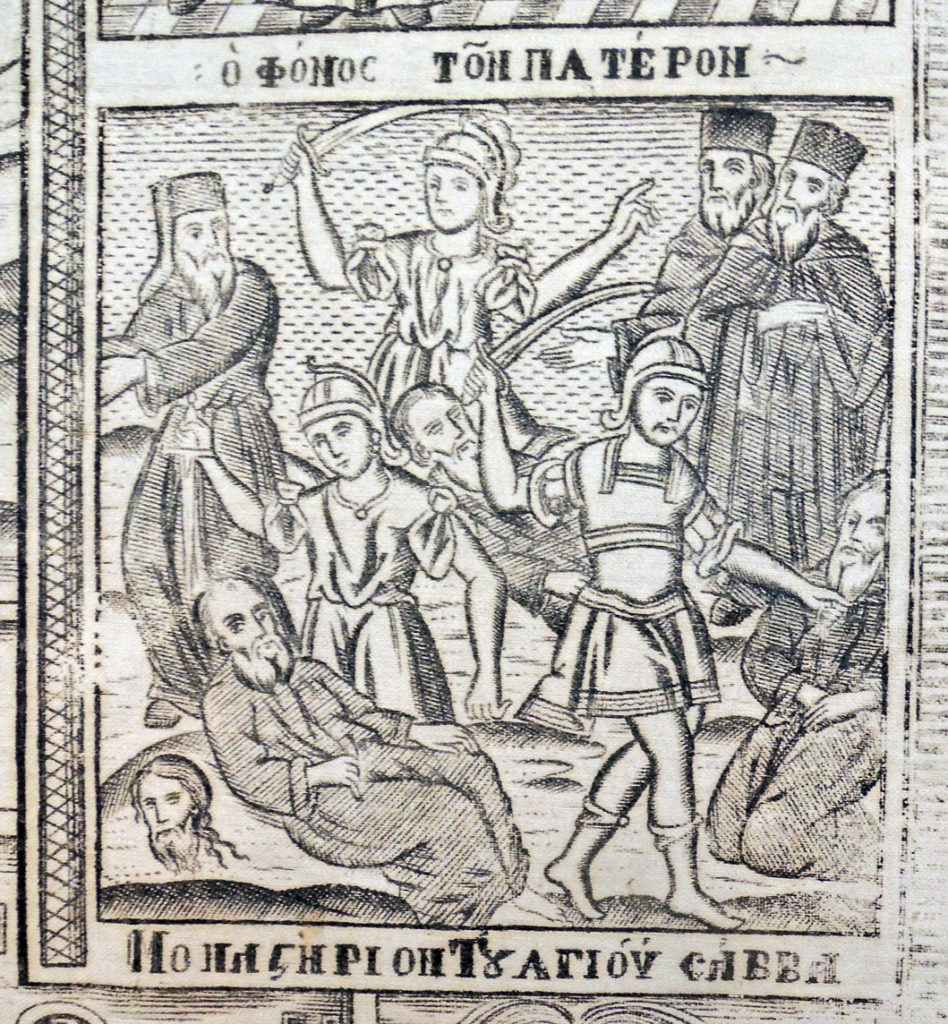
This is the description that comes along with the engraving:
The triangular fortress-like arrangement of buildings comprising the monastery of Saint Savvas in Palestine lying beside a torrent bed fills the entire width of the lower part of the engraving. A tall tower stands at the apex of the triangle; the katholikon and domed sepulchre of Saint Savvas occupy the inner courtyard. Fifteen male figures stand on the ramparts of the monastery walls, lower right. In front of the monastery are two kneeling Arabs, two pilgrims on horseback, and a couple of monks. A cameleer stands with three camels in the stream bed; above them are two monks strolling, another on horseback holding an umbrella, and a youth. In the distance is a tower.
The imposing full-length figure of Saint Savvas stands at the rear of the monastery; with his right hand he gives a blessing, and in his left holds an inscribed scroll: “Whosoever conquers the flesh has conquered nature. He who has conquered nature has set himself over nature.”
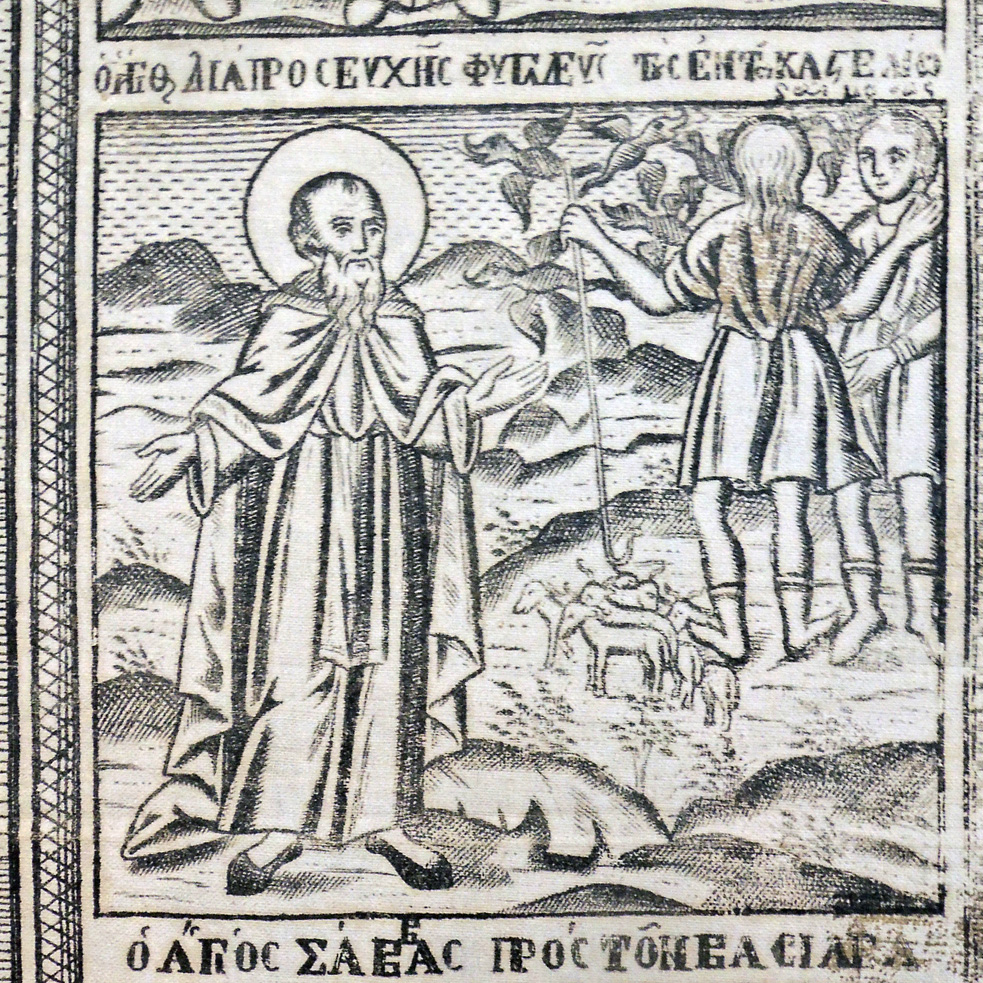 On either side of Savvas is the inscription “Saint Savvas” and in the upper right-hand corner a small bust of the Virgin carrying a scroll with an inscription (not translated). Either side of the saint are eight miniature scenes from his life; they are accompanied by the following captions:
On either side of Savvas is the inscription “Saint Savvas” and in the upper right-hand corner a small bust of the Virgin carrying a scroll with an inscription (not translated). Either side of the saint are eight miniature scenes from his life; they are accompanied by the following captions:
Left: The Fiery Column, Which the Saint Saw One Night in Church Saint Savvas in the Lions’ Den Miracle Worked By Saint Savvas Concerning the Camel the Dormition of Saint Savvas
Right: He Administers the Eucharist to the Tired Fathers through His Prayers, The Saint Enables the Martyrs in the Fortress to Escape the Saint Addresses the Emperor the Murder of the Fathers
Below the miniatures, on the right: Monastery of Saint Savvas; and on the left: Saint Savvas’ Brook
This is one of 23 known engravings by Kyrillos, the most prolific of the engravers of Mount Athos, who was working on the Greek holy mountain between 1834 and 1862. An engraving tradition began on Mount Athos in the last quarter of the eighteenth century, and continued until a ten-year hiatus over the Greek War of Independence. In the period following, to which our print belongs, a “distinctive Athonite style” – noted to be entirely separated from western engraving traditions – was achieved, which “was to persist unaltered, without any radical changes, until the end of the century” (Papastratou).
See: Dore Papastratou, Paper icons: Greek orthodox religious engravings 1665-1899 (2 vols., Athens 1990) 524-5 (#558), see also 27-31. Marquand Library Oversize NE655.2 .P3713 1990q

